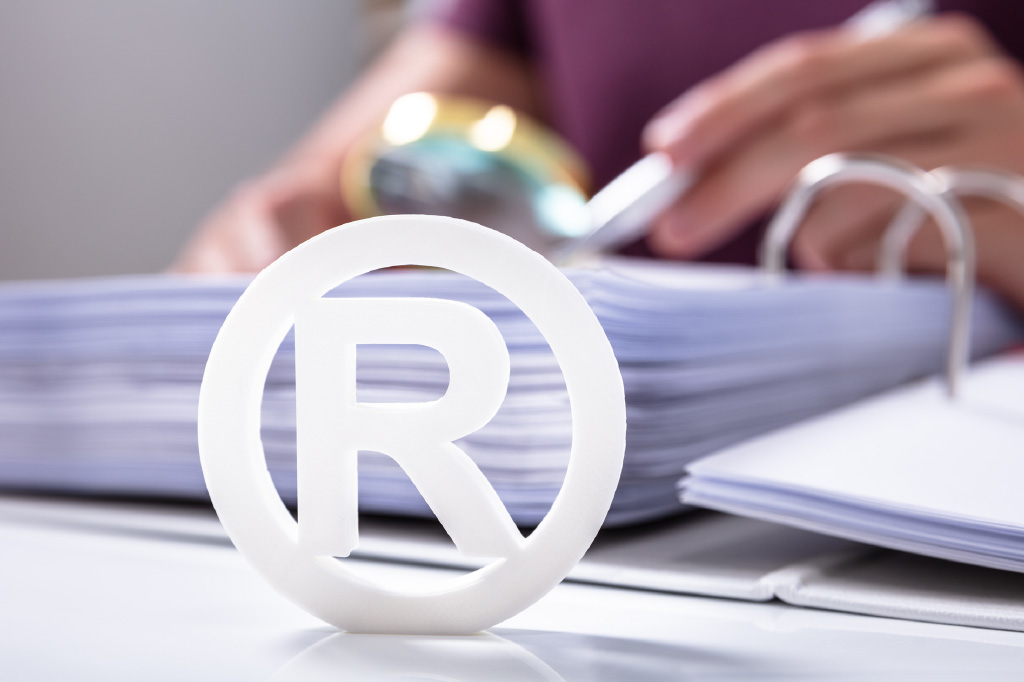The Southeast Asian market is growing in prominence and attracting various businesses. In fact, Singapore is ASEAN’s most developed economy, offering numerous investment opportunities for companies. However, counterfeiting and IP violations are also real problems, which is why, as a business owner, it is imperative to have a robust IP strategy in place to establish a strong IP portfolio.
The names and logos that identify your brand are of utmost importance, and legally securing your chosen trademarks is perhaps the best thing you can do towards protecting your brand and growing your business. As such, registering your trademarks should, therefore, be a priority, considering that it will help distinguish your company name and its products and services from your competition. It will also be instrumental in building trust, reputation and goodwill of your business as your trademarks are your business’s unique identity in the market.
What is a trademark
The Intellectual Property Office of Singapore defines a trademark as “a sign that you can use to distinguish your business’ goods or services from those of other traders. It can be represented graphically in the form of your company’s name or logo.
There are “classic” trademarks such as words, names or devices. However, there are also trademarks of a new generation called non-traditional trademarks, such as sounds, colours, smells or animations. Those trademarks have a strong psychological impact on consumers, and we believe that the rapid technological advancements will inevitably push for a favourable trend of registration of those marks.
Although registering trademarks is not mandatory and is often considered by entrepreneurs as inessential or something that can be taken care of later, they are one of the most important assets of a business. Even though they are intangible, their value increases with the growth of your business. In fact, it is a form of property that may be licensed or assigned, subject to fees.
It is important to note that there is a difference between a trademark and company name. As such, there should be no confusion between registering a company name and filing a trademark application in the sense that registering your company is not sufficient to obtain trademark protection.
How to identify a trademark
You may have come across two symbols that identify a trademark:
® – This symbol which means “registered” should be exclusively used for registered trademarks that are protected under trademark laws. It alerts third parties that your trademark is registered and deters potential infringers.
™ – TM stands for “trademark” and this symbol identifies the mark as being used by a business as a trademark.
Important trademark terms
Before you delve into trademarks and read about why they are important, you might want to get familiar with certain terms and IP jargon.
Priority claim
The first-time applicant of a trademark is granted the right to claim priority when filing applications for the same trademark in other countries within a 6-month period, starting from the date of the first filing. If priority is claimed, then the second application will be considered as having been filed on the same date as the first filing. As such, the applicant will enjoy prior rights against applications filed by third parties since the date of filing in the first country.
Distinctiveness
A trademark must be distinctive to the consumers to be accepted by the registry, as the purpose of a trademark is to identify its origin. Arbitrary trademarks (such as Blackberry) or fanciful trademarks (like Nike) are considered the most distinctive trademarks.
Descriptiveness
A descriptive trademark is one that describes some characteristics of the products or services of interest such as the quality, quantity, intended purpose, value or origin. Descriptive trademarks can generally not be protected as a trademark unless their extensive usage causes them to have acquired distinctiveness.
License
This is an agreement between a trademark owner and a third party, allowing the third party to make limited, specific use of a trademark. Licenses are usually subject to royalty payments.
Infringement
Trademark infringement occurs when a trademark that is identical or confusingly similar to another company’s mark which is enjoying prior rights, is used without its owner’s permission.
Here are a few more important trademark terms you must know, that can be valuable to you when registering your trademark.
Why should you register your trademark?
The decision to register your trademark is a sound one. It will benefit you and your company in ways that you may not fully comprehend when you start your business. In fact, registering your trademark is a very important item on your to-do list when you start your business. Here are some of the benefits of registering your trademark:
1. Gives you exclusive right to use the mark
When you carefully deliberate on the choice of your mark such that it fits your products or services, you want to be able to use that mark exclusively. Registering your trademark grants you this exclusive right.
2. Helps in brand recognition
People recognize your brand when they see your trademark in the market. It assures them of the quality of your products or services.
3. It is an asset
A trademark is an intangible asset to your business, whose value increases with the growth of your business. It can later be sold or licensed, just like any other tangible asset, subject to the payment of fees.
These are other compelling reasons why you must register your trademark. Learn about the various benefits of trademark registration from our earlier article.
When should you register your trademark?
Ideally, the best time to register your trademark would be before you launch your products or services, or before you begin to use it in public.
When you start a business, you may not understand the necessity of registering your trademark until it is too late. The decision to start using your trademark in the market without considering protecting it could be due to numerous reasons, from not understanding the significance of trademark registration to budgeting issues. Whatever the reason, it could prove to be a costly mistake – one which could be easily avoided.
Registering your mark at an early stage of your business will avoid situations where legal action is being taken against you by a third party for using a mark that is the same or similar to that of the third-party. In such cases, it is much harder, or it could be even too late, and definitely much more expensive to gain back control on your trademark rights and obtain trademark protection.
Find out the common trademark mistakes startups make, so that you can easily avoid them.
How to register your trademark?
In Southeast Asia, trademark registration follows the first-to-file system. This means, the first person to file a trademark application in a particular country will be the one to receive the exclusive right to use that trademark in that jurisdiction, once registration is completed. Hence, applying for protection as soon as possible is always recommended.
The steps involved in the process are as follows:
1. Pre-filing search
Start with conducting a pre-filing search or trademark availability search, which is critical if the business intends to launch the mark before it is accepted for registration. This is to make sure that your trademark is not identical or confusingly similar to one that is already used or registered by a third-party, in which case your product launch runs the risk of being blocked because of the conflicting trademark that you were unaware of.
Some Southeast Asian trademark registries do not provide online search options. Furthermore, the registries’ databases may not be complete or totally reliable. It is therefore advisable to engage a local trademark agent who will assess the risk of objection based on the existence of prior identical or similar trademarks.
Once you are sure that your trademark is unique in relation to the class(es) of goods or services that you wish to apply for, you are safe to proceed with preparing and filing the trademark application.
2. Application
Trademark applications are filed with the local trademark offices and you will have to appoint a local attorney to submit the application if you do not have a local address. The application will require you fill in the following details:
– The applicant’s name and address
– The graphical representation of your mark
– The class(es) and the list of goods and services for which you will be registering your trademark
– The priority details if applicable
– The declaration of your use of the mark, or intent to use it for some jurisdictions
You will need to pay application and/or registration fees as well.
3. Examination
The registrar will perform a formality check to ensure that your application meets the minimum filing requirements. This could mean checking if the trademark has been clearly represented, verifying your name and address, etc.
This is followed by a substantive examination that will take anything from 2 to 18 months, depending on the jurisdiction. In certain cases, the registry might refuse your trademark and in case of objections, you will be given a certain timeframe within which to present arguments or respond with an alternative proposal. This response will depend on the country but it is usually between 30 and 90 days, which may be extended upon request.
To reduce the risk of objections, before registering your trademark, you must ensure that it meets the registration criteria. It should:
– be distinctive
– not confusingly similar to an existing registered trademark
– be capable of being represented graphically
– distinguish your goods and services from that of others
– not be descriptive of the goods and services (for example, best, cheap, etc.), or used customarily in the language or established trade practices
– not be deceptive, misinterpreting the nature, quality or geographical origin of the product or service
– not offend or promote immoral behaviour
Some of the above requirements are technical and you might consider approaching a trademark agent to help you in this connection. In the meantime, please read about the trademark registration basics for a broader understanding of the trademarks’ system.
As stated above, there are several reasons why your mark may be objected to. If you are registering a trademark in Singapore, here’s why your trademark could be refused by the Intellectual Property Office of Singapore (IPOS).
4. Publication
A successful examination will lead to the publication of your trademark application in the trademark journal, for third parties to oppose your application. If a third-party decides to oppose the registration of the trademark, they will file a notice of opposition within a particular opposition period as per local regulations. This is, for example, 2 months in Singapore and Malaysia, or 30 days in the Philippines.
5. Registration
If there are no objections raised, or if your application prevails despite the opposition, your trademark will then be granted registration and you will receive a certificate of registration. Once registered, your trademark will be protected for an initial period of 10 years, beginning from the date of filing your trademark application.
Find out about the process of trademark registration in Singapore.
Trademark classification for good and services
When registering your trademark, you first need to determine which class(es) your goods or services belong to. The Nice Classification, established by the Nice Agreement (1957) is an international classification system for goods and services. This system, having 45 classes, is used in most of the countries worldwide.
In addition to choosing the class(es) of interest, you will need to select the exact list of goods and services you would like to obtain protection for. In this connection, it is important to note that even if the countries you are interested to obtain protection in, follow the Nice Classification, each jurisdiction has its own particularities and you will need to adjust the list of goods and services so as to comply with local practices in order to minimise the risk of objections.
Some countries will need you to file separate trademark applications for each class of goods and services. Other countries accept multi-class filings wherein a single application can be filed to cover more than one class of goods and services. Multi-class filings are now possible throughout Southeast Asia with Malaysia accepting the same since the beginning of 2020 as per the amendments to Malaysia’s Trademarks Act. This being said, even if multi-class applications are possible, they might not be the best option in some jurisdictions, and you might want to seek the advice of a trademark agent before filing a multi-class application.
Know the different trademark classes to see which class(es) your goods/products may be registered under.
Choosing a local script trademark equivalent
You should also consider obtaining protection for your trademark in local languages. This is because registration in the original Roman characters does not protect your mark against the registration or use of the same or similar mark written in the local script used in Southeast Asian countries such as Mandarin, Malay, Tamil, Burmese, Khmer, Lao or Thai.
Choosing a local equivalent is important to establish your control over how your brand is presented to the local audience, and thereby, maintaining its reputation.
Registering your trademark under the Madrid System
Trademark protection is territorial by nature so if you are planning to protect your mark in several countries, you should consider filing and registering your trademark in each jurisdiction. The Madrid System allows you to file a single application in one language through the International Bureau of the World Intellectual Property Organization (WIPO) for trademark protection in multiple countries. In operation since 1995, it has been ratified by various countries across the globe.
In Southeast Asia, the Madrid System has been implemented in Singapore, Vietnam, Laos, Philippines, Cambodia, Brunei Darussalam, Thailand, Indonesia and recently, Malaysia. Only Myanmar has not yet acceded to the Madrid Protocol in this part of the world.
The Madrid System is a simple, convenient and cost-effective solution but filing trademark applications through the Madrid System may not be the answer for all trademark owners. There are some factors that need to be taken into consideration before deciding to file an international registration, such as the obligation to maintain your registration in the country of origin for five years. Indeed, international registration will cease to exist if, within five years from the date of international registration, the basic application or registration in the country of origin stops enjoying legal protection due to withdrawal or lapse, if it has been renounced or been rejected, cancelled or invalidated.
Find out more about the Madrid System and its benefits.
How to maintain your trademark registration
Simply registering your trademark isn’t enough. You will need to fulfil certain requirements that will prevent cancellation, revocation or expiry of your mark. The requirements vary from one jurisdiction to another but generally, you will have to:
– Pay renewal fees every ten years
– Publish a cautionary notice, in Myanmar for example
– Submit a declaration of use of your mark, like in the Philippines or in Cambodia
– Use your mark to avoid cancellation by a third party based on non-use
Learn more through our article on how to maintain your trademark registration in Asia.
Renewing your trademark
In most jurisdictions, a trademark is valid for 10 years after which it may be renewed indefinitely every ten years. Certain jurisdictions may, however, have a different practice. For example, Myanmar’s current trademark renewal timeframe is three years. However, the new system that will be implemented in the next few months in this country will offer a 10-year validity. Please read more about the major changes in the 2020 trademark system in Myanmar.
Here’s everything you need to know about trademark renewals in Asia.
Trademark infringement and enforcement
Once you have protected your trademarks, it is important to keep a watch online and in the market, and take action against infringers to strengthen your rights and to avoid your marks from being diluted. Criminal and civil litigation actions could be lengthy and expensive in some Asian countries and sending warning letters is a cost-effective option to consider in case of infringement.
In addition, it is important to record your marks with the customs in the countries where this is possible, as custom seizures are an effective way to watch for and stop counterfeiting.
As a business owner, you need to be mindful of protecting your trademark. Especially because trademarks go a long way in establishing your reputation in the market and establishing a connection with your customers. We hope that our article will convince you to take the necessary steps to register your trademark at the earliest.
At IPHub Asia, we help businesses register their trademarks and maintain their IP rights. If you have any questions regarding IP protection or require solutions for your trademark and design rights in Asia, do get in touch.
You can also visit our website to know more about what we do and the services we offer.









